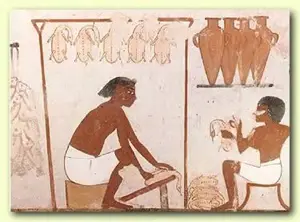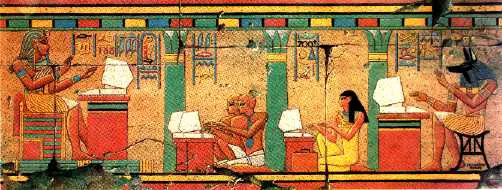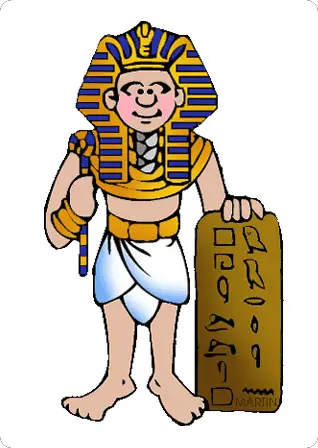Egyptian School
Formal education in ancient Egypt was mostly reserved for the boys of wealthier families.
Although there is some evidence that occasionally, girls did go to school and even became doctors.
Boys usually started school at the age of 7 and they were taught to read and write as well as mathematics.
A recent discovery in Egypt showed classrooms that were set up very similar to today’s and there were inscriptions on the walls about the rules for behaving properly in class.

From the pictures and images, it seems that classrooms had tables for the children to use to write on and lessons were taught by teachers.
Some schools were designed for specific talents, such as ‘Scribes’.
These were the people that would have the job of writing all of the history, letters and all communications.
Scribe students would spend hours writing and re-writing the hundreds of symbols that made up the Egyptian words.
There is evidence that the kids didn’t always like doing the work and when they skipped school, they were punished.
What did they learn?
Most of the education for both boys and girls came from their mothers and fathers.
For boys, they learned the family trade.
For girls, they learned the household responsibilities including cooking, sewing and in some cases, even taking care of the family business.
If a boy was instructed in the art of building or sculpture, his father would hope that his talent was exceptional enough for him to be accepted as part of the tomb-builders.
If a boy failed to learn his trade well, he would be sent out of the village and would have to set up his life in another town.
Wisdom Texts in Ancient Egypt
If a boy attended a formal school they began at the lower grades, what we might consider kindergarten.
They would learn a number of lessons and these might include Egyptian literature.
These were called ‘wisdom texts’ and included many of the lessons on the way to get a good position in life.
The ultimate goal of the Egyptian student was to be good enough to be accepted in one of the high positions such as the royal palace, the temples or army, a government job, tax assessor or even medicine with the priests.
Learning to write
It seems that the lesson books, called ‘Kemty’ (which means completion) were not designed in the horizontal way we are taught, but instead, they used vertical (up and down) lines for children to learn and write in.
A majority of the Egyptian population did not receive any kind of formal education.
Many of the people worked in the fields and this type of job was passed down from father to son.
It was a rarity that anyone escaped the fate of their class and rose up to become educated or wealthy.

Girls and education
Some young girls were educated in both a formal manner and by their mothers.
Many Egyptian families required that the husband or father be away at various times, and this meant that the wife or mother had to run the family business.
In the royal families, girls received equal education to the boys and they were often advisors to the pharaoh.
It is said that in a lot of cases, it was the women that had the most influence over some of the major decisions that the pharaoh made.
This meant that the women had to be smart and aware of politics, history, the class writings, mathematics and all of the arts.

The children of royal families and the high officials and nobles had the opportunity to attend the Prince’s School.
There is evidence that it was also open to other boys that showed excellent promise.
The school taught: Reading and writing and the Hieroglyphs, history, mathematics, geometry, geography, cartography (study of maps), science, ceremonial dance and music, astronomy, medicine, astrology and religious training.
Facts about Ancient Egyptian Education
- School started for boys when they were 7 years old
- Girls stayed at home to help around the home
- Somethings girls did go to school, but many were home-schooled
- Girls from lower-class backgrounds had very little education
- Some lower-class and middle-class boy left school at 14 to work as apprentices to their father
- Girls stayed at home to help with baking, cooking and running the home
- Some boys trained to become scribes they got paid to write down information or read documents
- Girls were not usually permitted to become scribes



